Navigating the Festive Landscape: A Guide to Holidays in the Philippines in 2025
Related Articles: Navigating the Festive Landscape: A Guide to Holidays in the Philippines in 2025
Introduction
With enthusiasm, let’s navigate through the intriguing topic related to Navigating the Festive Landscape: A Guide to Holidays in the Philippines in 2025. Let’s weave interesting information and offer fresh perspectives to the readers.
Table of Content
Navigating the Festive Landscape: A Guide to Holidays in the Philippines in 2025
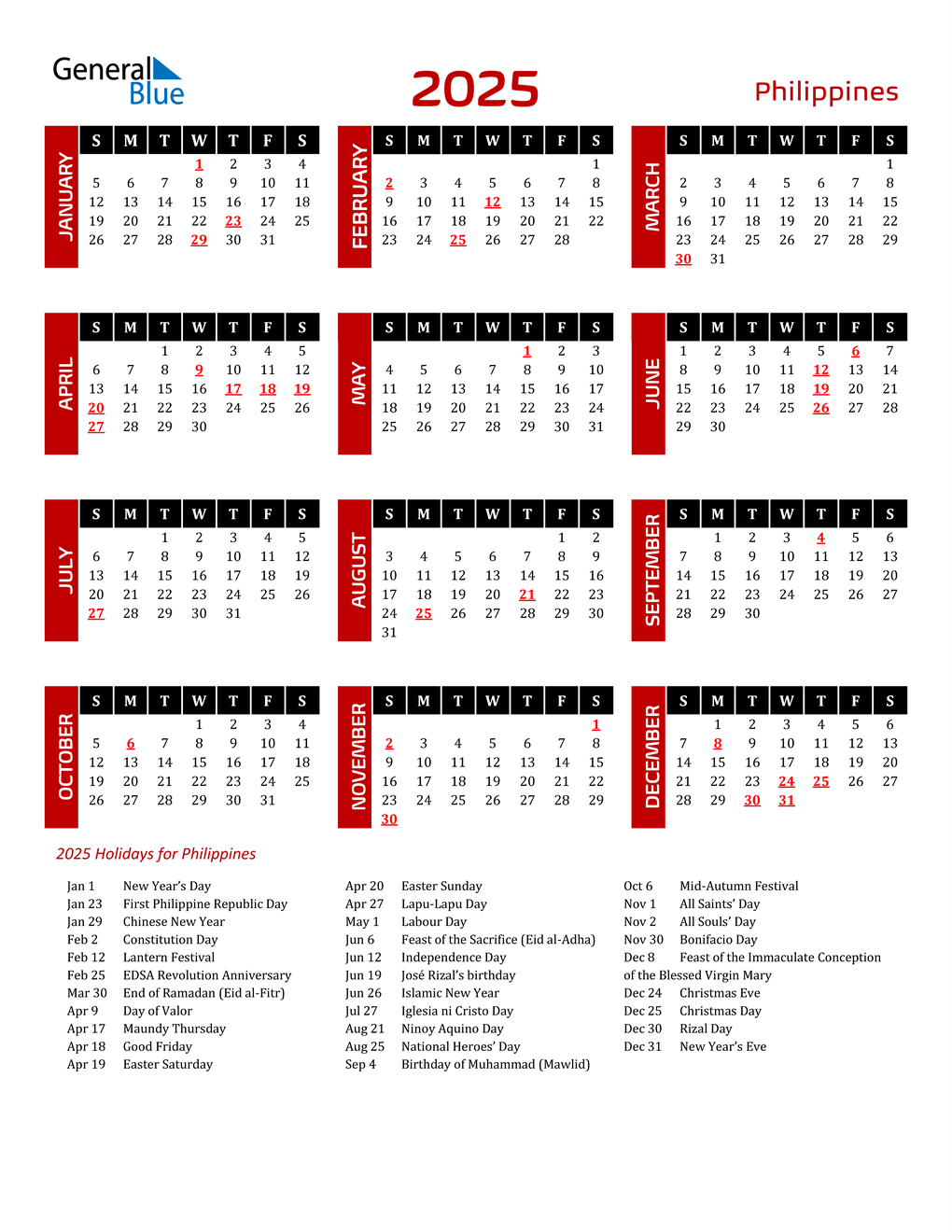
The Philippines, an archipelago of vibrant culture and rich history, celebrates a multitude of holidays throughout the year. These holidays, woven into the fabric of Filipino life, offer a unique blend of religious observances, historical commemorations, and cultural festivities.
Understanding the Filipino Holiday Calendar
The Philippine holiday calendar is a diverse mix of national holidays, special non-working days, and local celebrations. National holidays are mandated by law, ensuring nationwide recognition and observance. Special non-working days, on the other hand, are declared by the President, often coinciding with significant events or local celebrations. Local holidays, specific to particular regions or provinces, add further layers of cultural richness to the national tapestry.
A Glimpse into 2025: Notable Holidays
While the exact dates of some holidays might vary based on lunar or solar calendars, 2025 promises a vibrant array of celebrations, each carrying its own significance and unique traditions:
January:
- New Year’s Day (January 1): A national holiday marking the beginning of a new year, filled with family gatherings, feasts, and traditional New Year’s Eve rituals like noise-making to ward off bad luck.
- Feast of the Black Nazarene (January 9): A deeply religious observance in Manila, commemorating the miraculous image of the Black Nazarene. Millions of devotees participate in the annual procession, showcasing unwavering faith and devotion.
February:
- Chinese New Year (Date varies): A celebration observed by the Filipino-Chinese community, marked by family reunions, traditional cuisine, and vibrant festivities.
March:
- National Heroes Day (Last Monday of March): A national holiday honoring the sacrifices and contributions of Filipino heroes who fought for the country’s freedom and independence.
April:
- Maundy Thursday (Date varies): A religious holiday commemorating the Last Supper of Jesus Christ, observed with solemn prayers and reflections.
- Good Friday (Date varies): A national holiday, marking the crucifixion of Jesus Christ. Churches hold solemn services, and many Filipinos observe a day of fasting and reflection.
- Black Saturday (Date varies): A day of mourning and reflection following Good Friday, leading up to Easter Sunday.
- Easter Sunday (Date varies): A joyous celebration of the resurrection of Jesus Christ, marked by church services, family gatherings, and traditional Easter egg hunts.
May:
- Labor Day (First Monday of May): A national holiday celebrating the contributions of Filipino workers and advocating for their rights and welfare.
- Mother’s Day (Second Sunday of May): A special day dedicated to honoring mothers and expressing gratitude for their love and sacrifices.
June:
- Independence Day (June 12): A national holiday commemorating the Philippines’ declaration of independence from Spain in 1898. Celebrations include parades, flag-raising ceremonies, and cultural performances.
August:
- National Heroes Day (Last Monday of August): A national holiday honoring the sacrifices and contributions of Filipino heroes who fought for the country’s freedom and independence.
September:
- Eid’l Adha (Date varies): A significant religious holiday celebrated by the Muslim community in the Philippines, commemorating the Prophet Ibrahim’s willingness to sacrifice his son.
October:
- National Indigenous Peoples Day (Last Monday of October): A national holiday celebrating the diverse cultures, traditions, and contributions of indigenous Filipinos.
November:
- All Saints’ Day (November 1): A national holiday, also known as "Undas," dedicated to honoring and remembering the departed. Families visit cemeteries to pay their respects and share stories of their loved ones.
- All Souls’ Day (November 2): A national holiday following All Saints’ Day, continuing the remembrance of the departed. Filipinos often visit cemeteries, offer prayers, and share meals with their families.
December:
- Christmas Day (December 25): A national holiday, marking the birth of Jesus Christ. Filipinos celebrate with festive decorations, carols, family gatherings, and traditional Christmas feasts.
- Rizal Day (December 30): A national holiday commemorating the execution of Dr. Jose Rizal, a national hero and a symbol of Filipino nationalism.
Beyond the Calendar: Cultural Celebrations
Beyond the official holidays, numerous cultural celebrations enrich the Filipino calendar throughout the year. These include:
- Sinulog Festival (January): A vibrant celebration in Cebu City, honoring the Santo Niño (Child Jesus), with colorful street dancing, religious processions, and lively festivities.
- Ati-Atihan Festival (January): A lively festival in Kalibo, Aklan, celebrating the arrival of the Aetas (indigenous Filipinos) and their conversion to Christianity.
- Panagbenga Festival (February): A grand flower festival in Baguio City, showcasing stunning flower floats, parades, and cultural performances.
- Feast of the Sto. Niño (January): Celebrated in various parts of the Philippines, this festival honors the Child Jesus and features religious processions, colorful costumes, and festive celebrations.
- Pahiyas Festival (May): A unique harvest festival in Lucban, Quezon, where houses are adorned with colorful rice cakes and other agricultural products.
- Kadayawan Festival (August): A grand celebration in Davao City, showcasing the region’s rich culture, diverse indigenous groups, and abundant agricultural produce.
The Significance of Holidays in the Philippines
Holidays in the Philippines serve a multifaceted purpose:
- Preserving Cultural Heritage: They provide a platform for transmitting and celebrating Filipino traditions, customs, and values.
- Strengthening Family Bonds: Holidays offer opportunities for families to come together, share meals, and create lasting memories.
- Promoting National Unity: They foster a sense of shared history, identity, and national pride among Filipinos.
- Boosting Tourism: Festive celebrations attract tourists from all over the world, contributing to the country’s economic growth.
- Reflecting Faith and Spirituality: Religious holidays offer time for reflection, prayer, and spiritual renewal.
FAQs: Navigating the Festive Landscape
Q: Are all holidays in the Philippines non-working days?
A: No, not all holidays are non-working days. National holidays are generally non-working days, while special non-working days and local holidays may or may not be non-working days, depending on the declaration of the President or local government.
Q: How do I know which holidays are non-working days?
A: The Department of Labor and Employment (DOLE) publishes a list of national and special non-working days annually. You can access this information on the DOLE website or through reputable news sources.
Q: What are the typical traditions associated with Filipino holidays?
A: Filipino holidays are often marked by family gatherings, festive meals, religious observances, cultural performances, and colorful parades. Specific traditions vary depending on the holiday and region.
Q: Are there any specific customs or etiquette to be mindful of during holidays?
A: Filipinos are generally warm and welcoming. Show respect for local traditions and customs, dress appropriately for events, and be mindful of religious practices. It’s always a good idea to ask locals for guidance on local customs and etiquette.
Tips for Enjoying Holidays in the Philippines:
- Plan Ahead: Book accommodation and transportation in advance, especially during peak holiday seasons.
- Embrace the Culture: Immerse yourself in local traditions, attend cultural events, and try traditional Filipino cuisine.
- Be Respectful: Show respect for local customs, religious practices, and cultural sensitivities.
- Be Prepared for Crowds: Expect large crowds during major holidays, especially in popular tourist destinations.
- Enjoy the Festivities: Let loose, celebrate with the locals, and create unforgettable memories.
Conclusion: A Tapestry of Celebrations
The holidays in the Philippines offer a unique glimpse into the vibrant tapestry of Filipino culture. From religious observances to cultural festivals, these celebrations serve as a testament to the country’s rich history, diverse traditions, and unwavering spirit. By understanding the significance of these holidays and embracing the spirit of festivity, visitors and locals alike can experience the true essence of Filipino life.
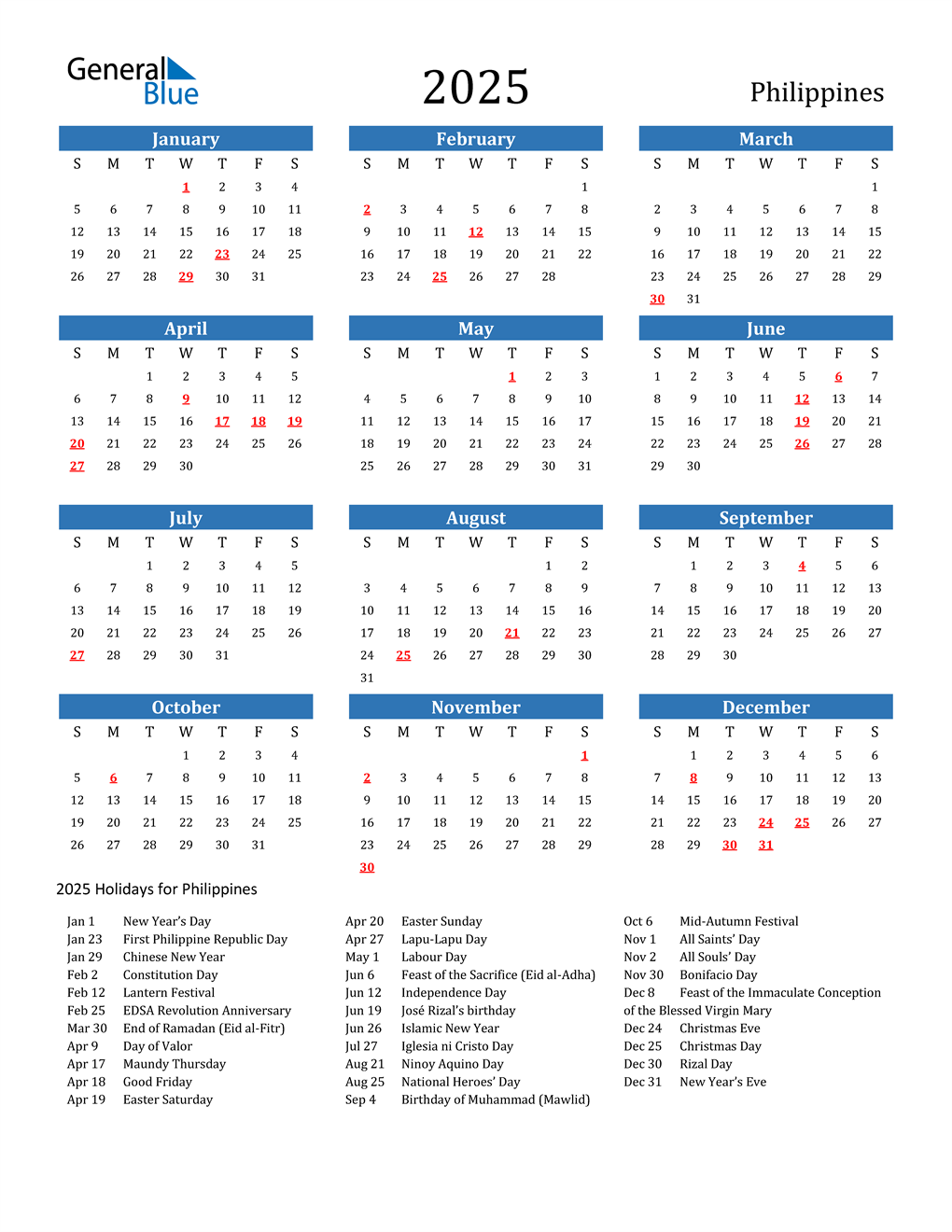
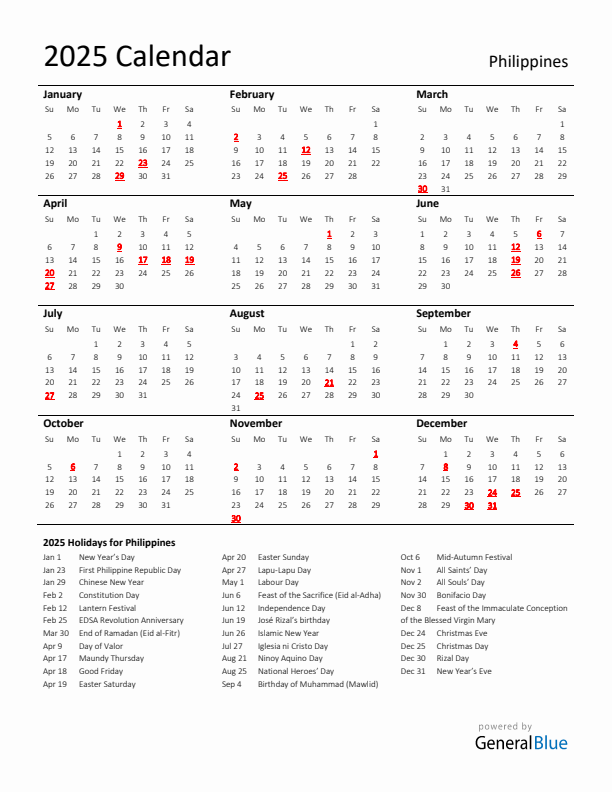


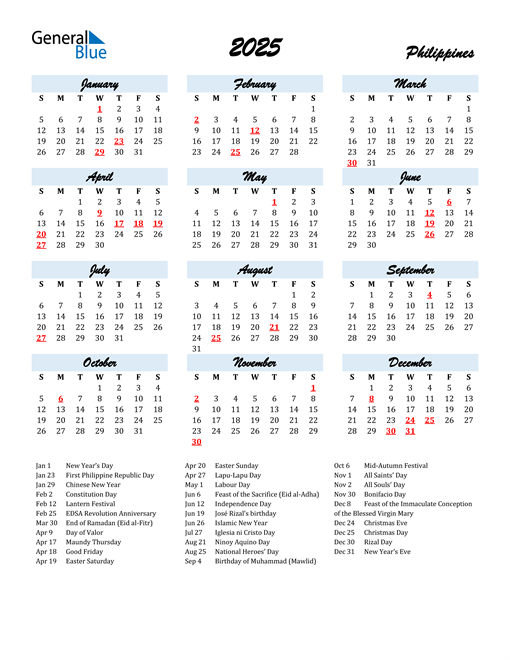
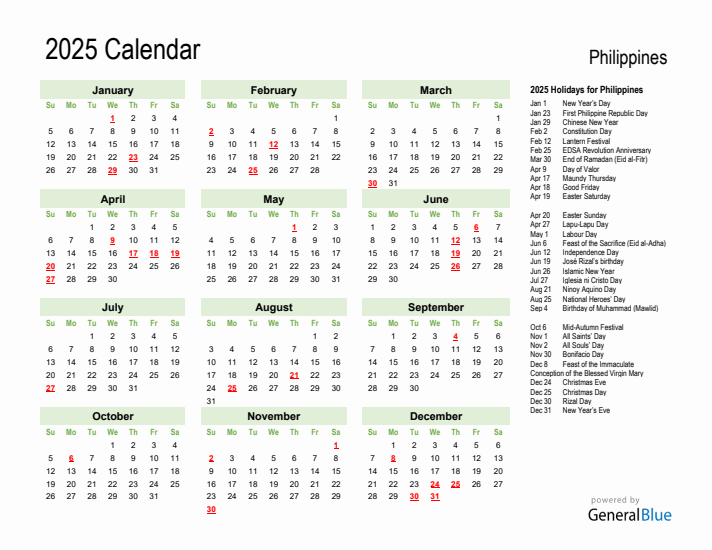
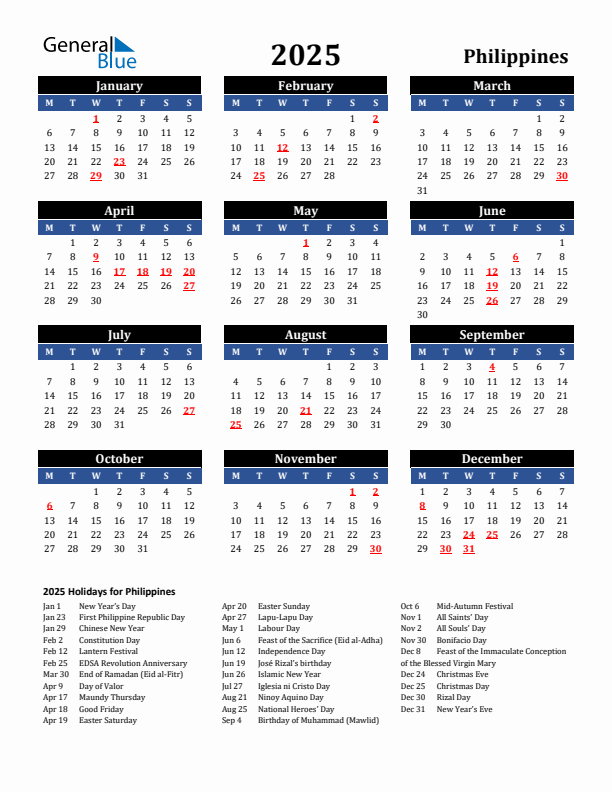
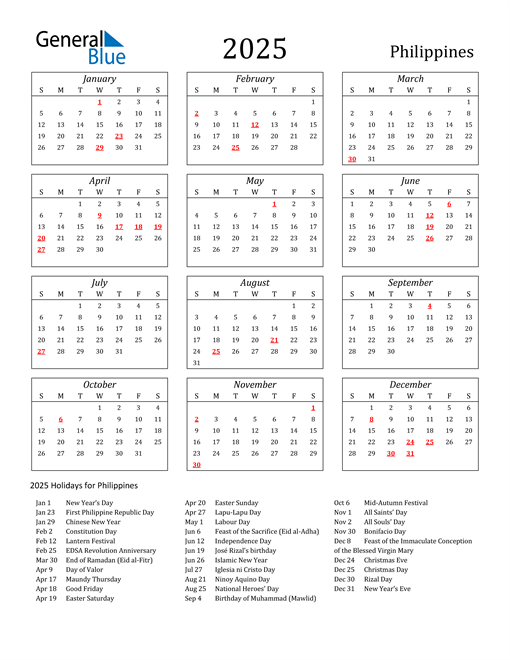
Closure
Thus, we hope this article has provided valuable insights into Navigating the Festive Landscape: A Guide to Holidays in the Philippines in 2025. We thank you for taking the time to read this article. See you in our next article!